Formula 1 News: 2024 Bahrain GP Preview
Just a week after pre-season testing concluded, Formula 1 returns to Bahrain for the first round of the 2024 season, from Thursday February 29 to Saturday March 2
This weekend’s event marks the 20th anniversary of the Bahrain GP, which welcomed Formula 1 in 2004, becoming the first grand prix in the Gulf region.
The 5.4km circuit is an all-round test of a car’s ability, characterized by long straights, heavy braking areas, and several traction zones that punish rear tires
Bahrain will open the new Formula 1 season for the fourth successive year, and sixth time in Formula 1 history, and it marks the start of a record-breaking 24 event schedule.
In an alteration from the usual grand prix weekend format the opening race of the season will take place on a Saturday. That means the first two practice sessions will be shifted to Thursday, with the final practice session and qualifying taking place on Friday.
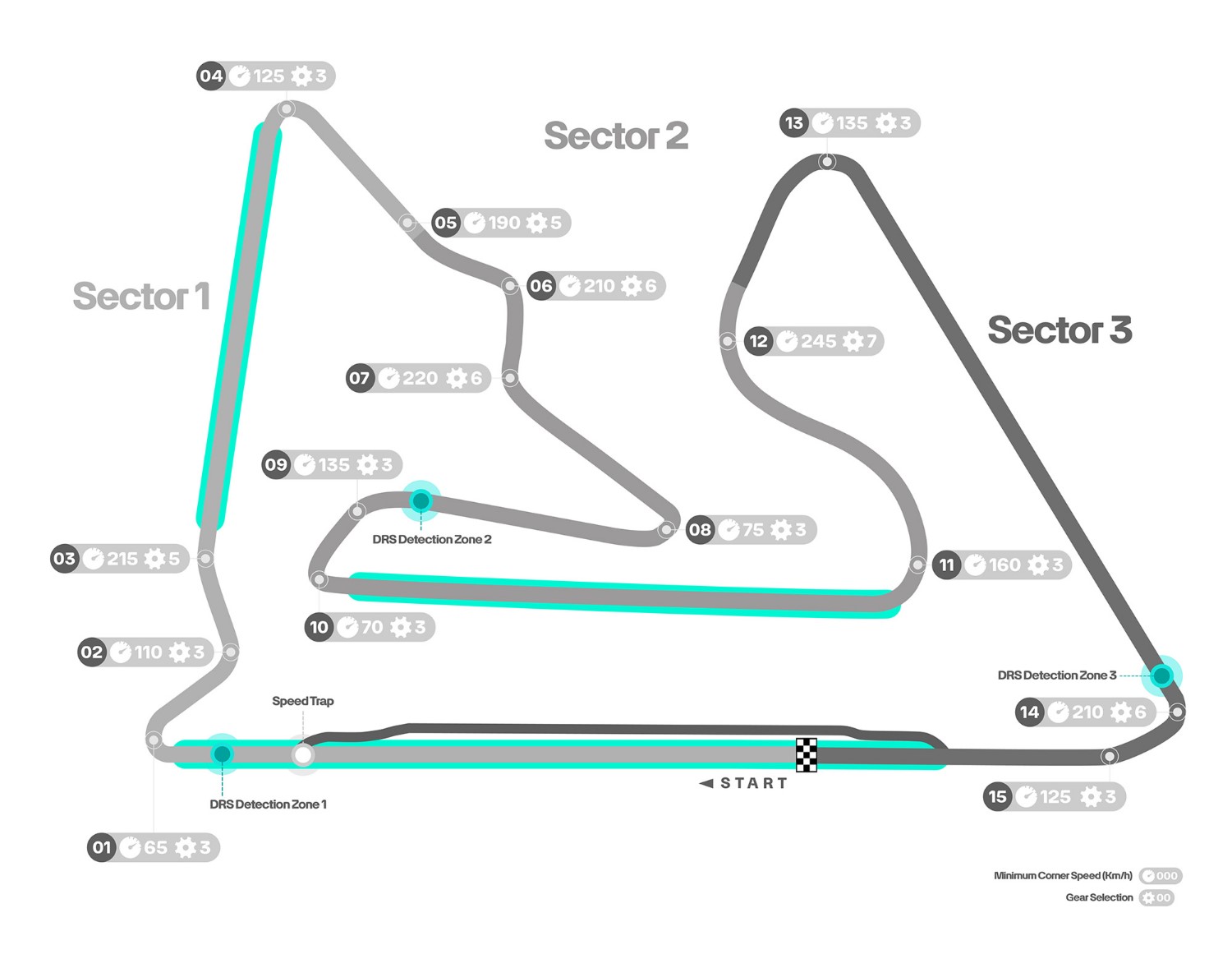
Following an incredibly busy pre-season test, teams have had a few days to reflect and analyze, and they’re looking forward to getting the cars back on the track to finalize the preparation for this weekend’s Bahrain Grand Prix.
They completed a lot of valuable running last week, which allowed all the teams to run a comprehensive testing program. The teams have since worked through the data, which has helped them plan for race weekend.
Overtaking – These new cars appear to be able to follow more closely through corners but benefit less from the slipstream along the straights. Bahrain’s three DRS zones should therefore prove beneficial. In 2021, there were 55 overtakes following the first lap. A key focus for engineers early in the season will be analyzing the difference in overtaking compared to previous campaigns.
Track Conditions – It’s tough from a tire management perspective as the temperatures are high and track is very rough; teams also have the added challenge of understanding how the 18-inch Pirellis cope with those conditions. The track is tricky because, as we saw in testing, it’s very windy, sandy and hot which are tough conditions to contend with.
Unlocking The Lap
Two key corners can make or break a lap around Sakhir’s 5.412km Bahrain International Circuit.
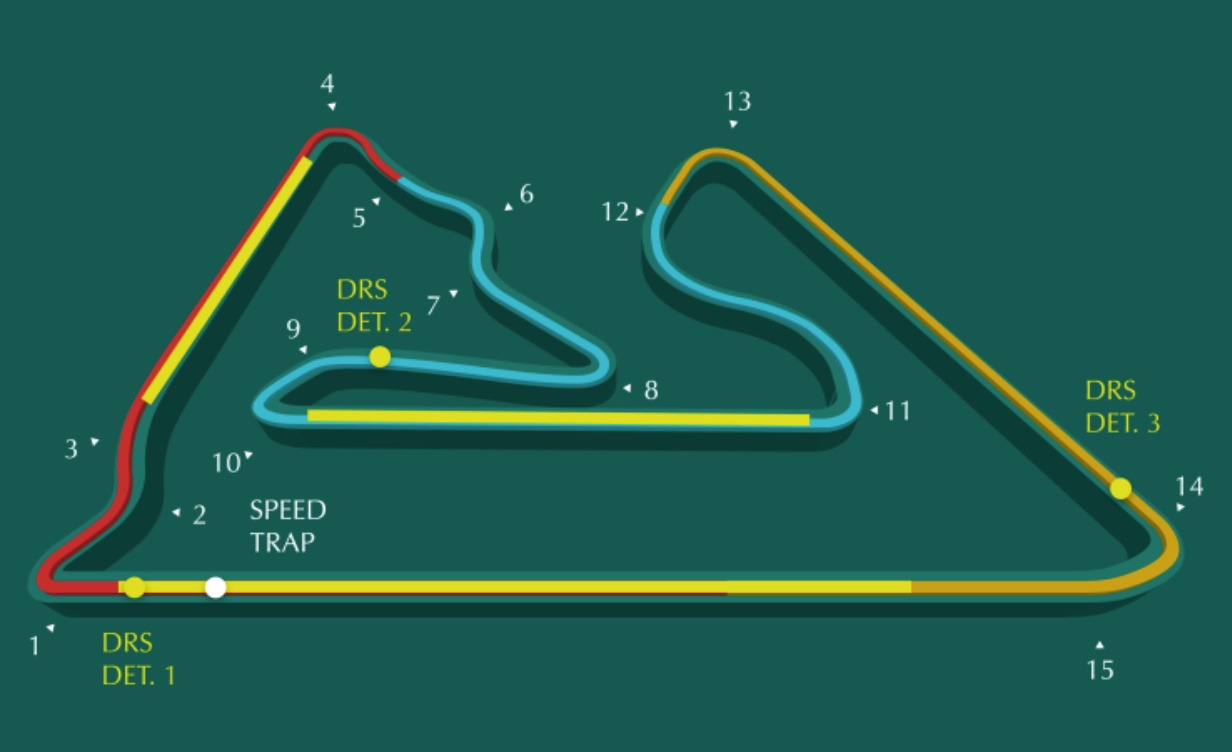
The first corner in Bahrain is crucial: blasting down a 1.2km straight, the 120m braking zone is particularly long, with drivers needing to shed roughly 241km/h (150mph). Getting the approach right is essential as it has a knock-on to Turns Two and Three and, often, can set up a pass into Turn Four. This is arguably the busiest part of the lap.
Turns 9-10 may look straightforward, but this combo is one of the most challenging corners on the whole calendar. Turn Nine is a flat-out kink, which reduces the load on the left-front tire, but Turn 10 arrives quickly and requires plenty of mechanical grip. With the heavier, ‘lazier’ cars, expect to see lots of understeering moments at the exit.
What you need in Bahrain is great braking stability because there are many braking zones where you’re close to hitting 5G.
You also need great traction. The first sector is all about traction, and Turn 10 is as well. The rear end is key in Bahrain, and therefore you need to keep the rear tires alive. The front tires don’t suffer, as it’s mostly longitudinal braking and acceleration, so you need a lot of rear stability and rear traction.
To protect the rear tires in the race, you have to be very careful when applying the throttle accelerating out of the slow speed corners. Any amount of unwanted wheelspin just adds stress and temperature to the rear tires and you’ll suffer the consequences if you keep doing that. It is very important to be very cautious when accelerating out of the corners and you need to make sure that you’re always driving a bit under the limit of the slip of the rear tires.
The high-speed corners in Bahrain also add stress to the tires because of the abrasive surface. You have to watch for thermal degradation and overheating – drivers can really make a difference by managing the rear tires efficiently.
The wind is also a factor. I’ve never driven in Bahrain with perfect conditions because it’s always windy. You need to know the intensity of the wind and the direction of it because it can affect things like braking points. It adds another to challenge to driving a lap of the circuit, but Lance and Fernando are both experienced drivers and will be well prepared for what awaits this weekend.”
Overtaking: Bahrain is traditionally one of the easier circuits to overtake on, with an average of 60 passes per race over the past five years. The trio of DRS zones are key: historically, 65% of all overtakes have used DRS. Turn One is the most popular overtaking location, with moves into T1 also setting up a counterattack into Turn Four.
Strategy: Like last year, Pirelli is bringing the C1, C2 and C3 compounds to Bahrain. Unlike last year, the C1 is no longer the hardest tire available this season, instead being a new, softer compound between C0 and C2. Despite a long pit delta, this has traditionally been a two- or three-stop race due to high tire wear.
Safety Cars: Four of the last five races have featured a Safety Car (SC), while the Virtual Safety Car (VSC) also has a strong likelihood of making an appearance, meaning teams need to factor it into strategy. With the long pit delta, a pitstop during a SC or VSC period can be very beneficial in the race.
Fact File: Bahrain Grand Prix
- Located in the middle of the desert, on what was formerly a camel farm, the Bahrain International Circuit features 1,120 palm trees.
- Being situated in a desert, you may expect sand to be an issue. However, the surrounding desert is sprayed with a sticky adhesive substance to minimize the amount of sand blowing on to the track.
- From the first breaking of the ground to build the Bahrain International Circuit to completion took just 496 days.
- The length of the tire barriers is 4100 meters and a total of 82,000 tires are used to do this.
- The total run-off area is 140,000 sq. meters.
- The Bahrain International Circuit has five FIA certified track layouts.
- Focus for car set-up is on optimizing low and medium-speed corner performance. Mechanical grip is crucial out of the slower corners, whilst the high-speed sections are easily taken flat-out.
- The track surface is made from a special aggregate that was shipped from a quarry in England.
- Owing to the abrasiveness of the track, which is one of the roughest of the season, tire degradation tends to be amongst the highest seen at any race across the calendar.
- One of the most challenging corners on the track is Turn 10. It’s long, combined corner entry that tightens before dropping away at the apex. Drivers must apply the brakes whilst completing the wide corner arc of Turn 9; this causes the front-left tire to go light and increases the risk of a lock-up.
- The 5.412 km layout comprises seven braking events, including two classified as ‘heavy.’
- This year marks the 20th anniversary of the first Bahrain Grand Prix and will be the 21st F1 Championship round at the Sakhir circuit. The race was cancelled in 2011 due to civil unrest, while the track hosted two races in 2020.
- This will be the sixth time that the Bahrain Grand Prix will serve as the opening round of an F1 season (2006, 2010, 2021, 2022, 2023).
- Four drivers have multiple wins at the event. Lewis Hamilton has the most with five.
- George Russell made his first start for Mercedes in Sakhir in 2020, deputizing for Lewis.
- For the first time in its history, the race will take place on a Saturday.
Defending Race Winner Max Verstappen
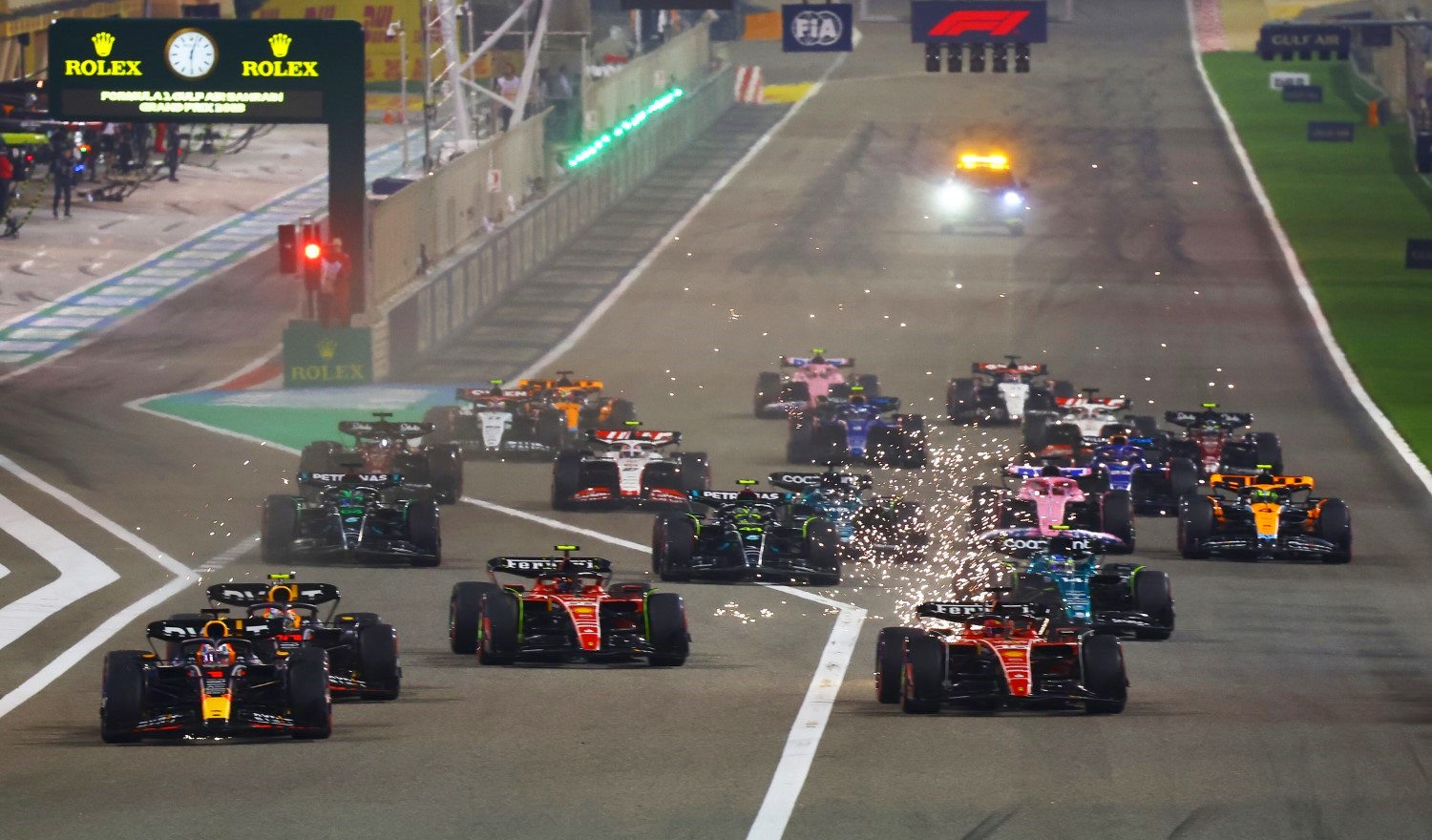
“I am excited to get the season underway and start racing again. I am looking forward to the weekend ahead in Bahrain.
“We had a good few testing days and learned a lot from the car. Of course, we don’t want to get ahead of ourselves and we still need to make sure we do everything right to have a strong first weekend.
“Everyone has done plenty of laps here in Bahrain, so hopefully shouldn’t encounter too many surprises in terms of set up direction for the week ahead.
“All in all, I am excited to get the season underway and start racing again.”
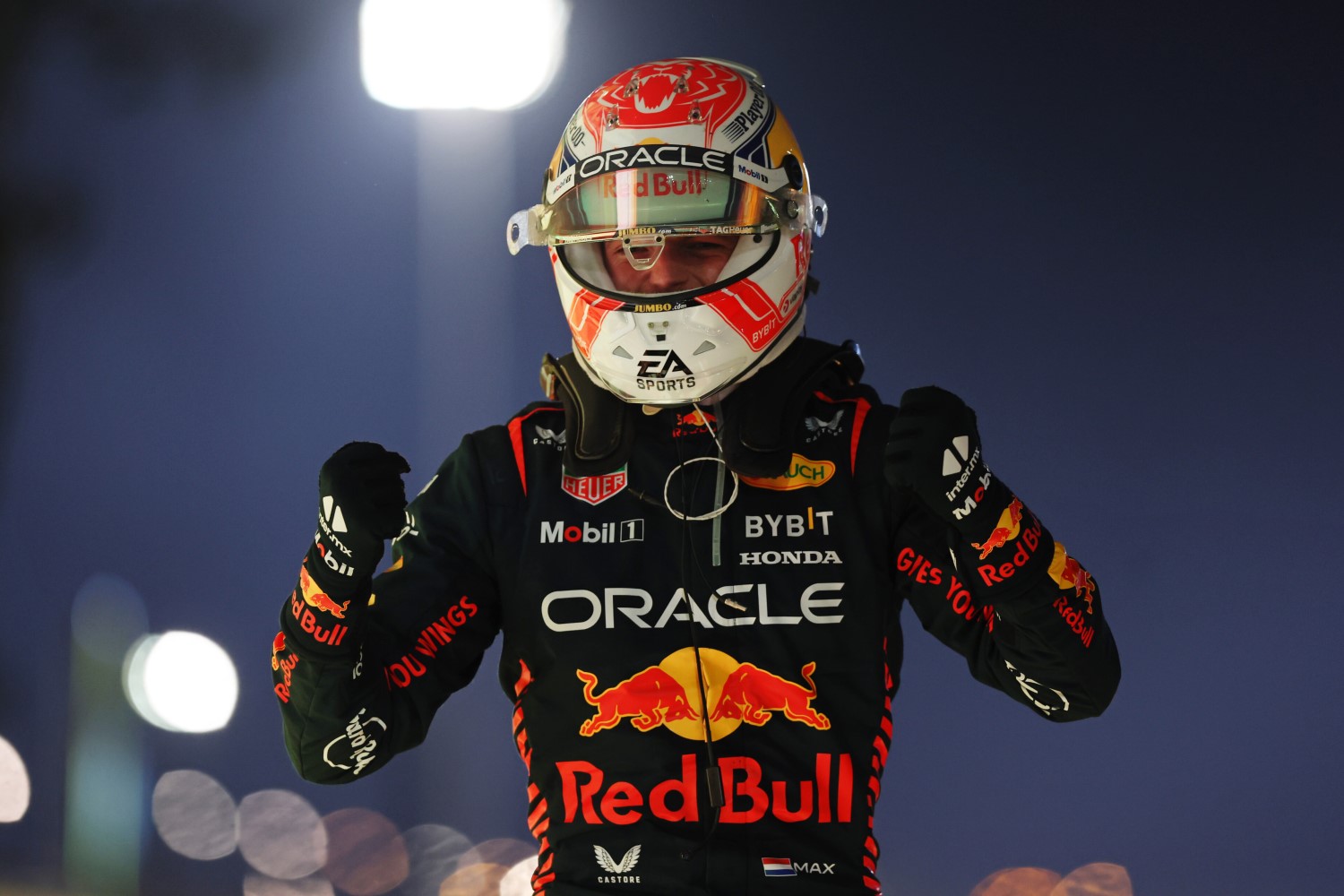
Max Verstappen’s first proper test in Red Bull’s new car went so well he began to get bored.
“Overall it was a very good first day,” said Verstappen last Friday. “I couldn’t really wish for more – I was actually wishing for less laps.
“But I did a lot of laps, everything went well. The balance was very nice. We tried quite a few things on the car, also for me to understand moving forward. We completed the whole program without any problems so for me that was a really good day.”
The RB20 is visibly different from its dominant predecessor in several respects. Verstappen is confident his team has taken the right decision to be bold with its design.
“I trust the team that they make the right decisions in terms of choosing the direction of the car,” he said. “I saw, of course, how it was already drawn at the end of last year. But I honestly I don’t care how the car looks as long as it’s fast.”
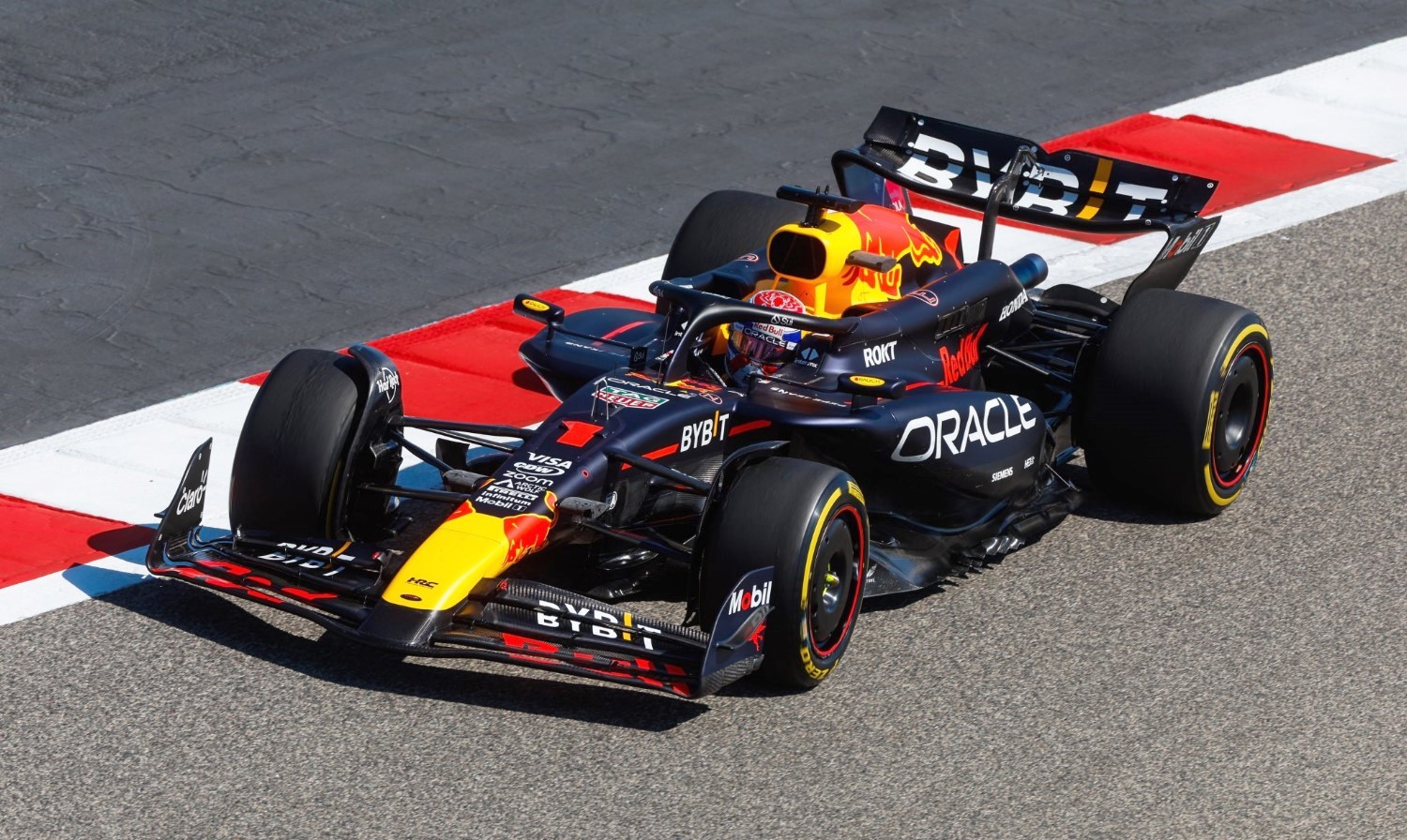
Although he shook down the new car at Silverstone, Verstappen said he didn’t get a good impression of it until testing began.
“Unfortunately our filming day was wet, so you don’t really know anything. But as soon as I jumped in here, it felt pretty normal.
“It looks a bit different but it’s the direction that the team chose and I believe that’s the best direction to go into if they say so. From my side now, it’s all about just giving my feedback about balance of the car, what I think can be improved.”
After Verstappen headed the first day of testing, Red Bull fell to fourth place in the final ranking of lap times. But he is satisfied “the car is better than last year’s car” and the team will extract more performance from it.
“The team believes that with how the car is at the moment that there is more potential to find,” he said. “So that’s now up to us to unlock.”
Pirelli Tires
The teams come to Sakhir with plenty of information about how the car and tire package works on this particularly abrasive track, where traction and braking stability are key to performance: both on a flying lap as well as on longer runs.
Track evolution is somewhat limited, with temperature being the biggest influence: two of the three free practice sessions take place in the heat of the day, making it harder to get a representative read on race data. Another factor often affecting the cars is wind, as it can blow sand onto the track and also make the balance unpredictable. Thermal degradation will be significant and can have a decisive impact on race performance, while wear is generally limited.
The Bahrain Grand Prix is traditionally one of the most spectacular races of the year as it offers a number of different overtaking opportunities, particularly in Turns 1, 4, and 11. Tyre degradation, with all the resulting different race strategies, also creates interesting performance differentials.
Last year, a two-stopper using the C1 and the C3 was the favored strategy, with the C2 used by only one team (McLaren).
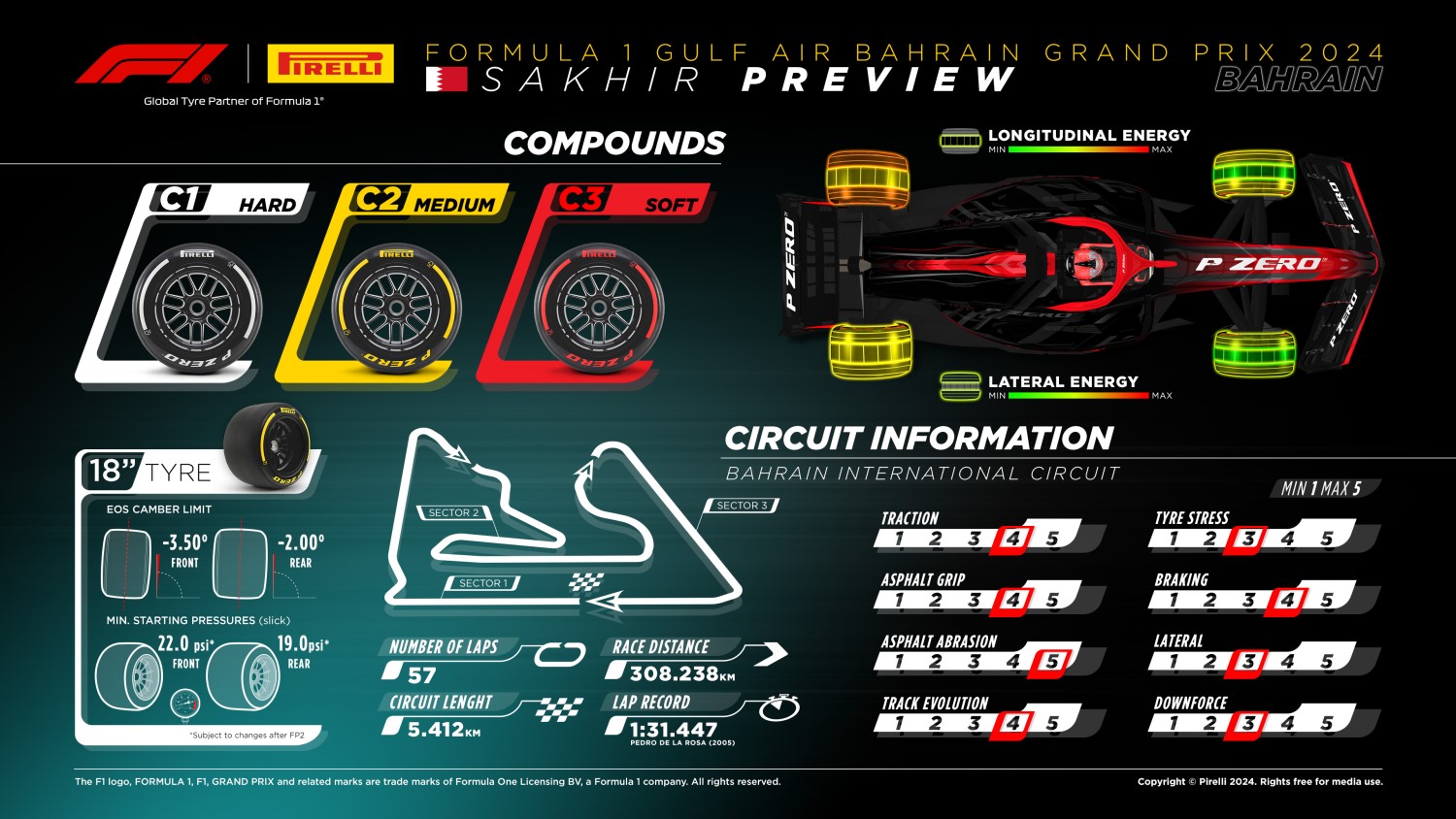
USA TV
On the heels of airing the two most-viewed seasons of Formula 1 racing ever on U.S. television, ESPN kicks off the 2024 Formula 1 World Championship season this weekend with the running of the Formula 1 Gulf Air Bahrain Grand Prix. The race will air Saturday, March 2, at 9:55 a.m. ET on ESPN and ESPN+ and in Spanish on ESPN Deportes and ESPN+. The first two races of the season are airing on Saturdays in a change from F1’s usual Sunday race days.
With F1 embarking on a 24-race schedule in 2024, the largest ever for the championship, ESPN will serve sports fans with expanded coverage, including the addition of a qualifying pre-show for the full season and additional F1 coverage on SportsCenter.
ESPN platforms will again air all races in the championship, with 18 of the 24 airing on ABC or ESPN. The other six will air on ESPN2 and 16 races will be simulcast on ESPN+. ESPN platforms also will televise live coverage of all practice and qualifying sessions for each race as well as live coverage of the six F1 Sprint races and accompanying Sprint Shootouts. ESPN Deportes continues as the exclusive Spanish-language television outlet for F1 in the U.S.
With Mercedes-Benz returning as telecast presenting sponsor, all live race broadcasts will continue the commercial-free presentation used over the past six seasons, a format that has set ESPN’s coverage apart and proved very popular with viewers. New for 2024, Liquid IV will be the season-long pre-race Grand Prix Sunday telecast presenting sponsor, and Heineken returns as sole sponsor of the pre and post-race coverage on SportsCenter.
SportsCenter and other ESPN news platforms will again have expanded, on-site coverage from Miami, Austin and Las Vegas, the three U.S. races on the F1 calendar.
As it has since F1 returned in 2018, ESPN is again teaming with Sky Sports and Formula 1 to bring Sky Sports’ award-winning presentation of F1 racing to American viewers. Included will be the addition of Sky’s qualifying pre-show, airing on ESPN3 leading up to live coverage of qualifying at all races.
Also new for 2024, ESPN platforms will have live coverage of all seven rounds, including races, practice and qualifying, for the second season of F1 Academy, a Formula 1 priority project to develop and prepare female drivers to progress to higher levels of competition. The series began in 2023 and ESPN aired the final round held in conjunction with the United States Grand Prix. The first F1 Academy race of the season will be on International Women’s Day (March 8) in Saudi Arabia.
ESPN+ will continue live coverage of all Formula 2, Formula 3 and Porsche Supercup races during F1 race weekends.
A major part of ESPN’s F1 coverage is ESPN.com/F1, a dedicated site that reports on the championship year-round, with reporters on-site at every race. ESPN’s F1 reporters also contribute to the video podcast program Unlapped, which appears year-round on the ESPN YouTube channel. Also connected with the ESPN.com/F1 website are social handles @ESPNF1 on X, @ESPNF1 on Instagram and ESPNF1 on Facebook.
Again this year, ESPN will produce countdown shows from the race circuits for the three U.S. rounds of the Championship. The programs will air live on ESPN social media and digital channels in the hour prior to the race telecast and will stream to ESPN’s YouTube, X and Facebook accounts, as well as on ESPN3 and the ESPN App.
The 2022 F1 season was the most-viewed season ever on U.S. television, averaging 1.21 million viewers per race across ESPN, ESPN2 and ABC. The 2023 season averaged 1.1 million viewers, the second-largest average in history, and included three of the four largest live U.S. F1 race audiences ever. Eight races set viewership records in 2023.
F1 returned to its original U.S. television home in 2018 – the first race ever aired in the country was on ABC in 1962. F1 races also aired on ESPN from 1984-1997.
Formula 1 Gulf Air Bahrain Grand Prix on ESPN platforms
| Session/Program | Date | Start Time (ET) | Network |
| F1 Show: Bahrain | Thursday, February 29 | 11:10 a.m. | ESPN3 |
| Practice 1 | 6:25 a.m. | ESPN2 | |
| Practice 2 | 9:55 a.m. | ESPN2 | |
| Practice 3 | Friday, March 1 | 7:25 a.m. | ESPN2 |
| Qualifying Pre-Show | 10 a.m. | ESPN3 | |
| Qualifying | 10:55 a.m. | ESPN2 | |
| Ted’s Qualifying Notebook | 1 p.m. | ESPN3 | |
| Grand Prix Sunday (pre-race) | Saturday, March 2 | 8:30 a.m. | ESPN, ESPN+ |
| Race | 9:55 a.m. | ESPN, ESPN+ | |
| Checkered Flag | Noon | ESPN3 | |
| Ted’s Race Notebook | 1 p.m. | ESPN3 | |
| Race (re-air) | 8 p.m. | ESPNEWS | |
| Race (re-air) | Sunday, March 3 | 1 a.m. | ESPNEWS |
